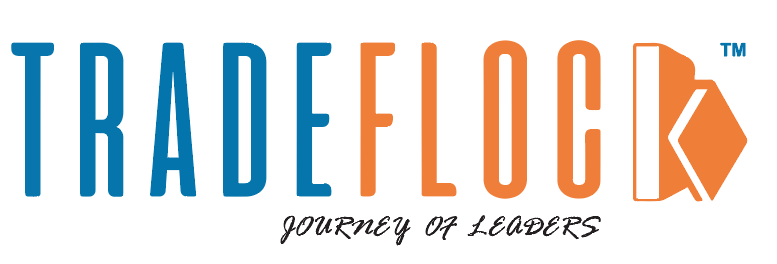If you want to stay ahead in this competitive business landscape, your organization requires a strategic planning roadmap for setting goals, purpose, and strategies that work for overall development. This planning goes through multiple stages, strategic, operational, tactical, and contingency, to support the business planning organization for overall success.
But what exactly do you mean by organizational planning? As the business’s leadership segment expands, it unlocks a new path of progressive growth and development. Let us help you introduce the concept of leadership development, set goals, and assess skills for strategic plans. As you progress with leadership, multiple strategies exist to change plans and meet goals.
Table of Contents
What Is Organizational Planning?
Organizational planning defines the roadmap of how business owners organize their daily operations. An organization plan refers to long-term strategies for achieving business goals and objectives by outlining tasks and schedules to align for the overall development of the project management structure.
It establishes a foundation based on market conditions. It helps companies stay flexible in the face of global disruption and shifting markets. Businesses introduce different products and services as the industry scales up with technology. This is all sets for rules and strategies that help you navigate through and establish each planning phase for strategic management.
Example: You are a mobile brand that is planning to launch a new product or variants of your old model; without outlining the structure of organizational planning, it will be difficult to incorporate the right strategies to launch a new phone in an entirely new market. So, with the help of outlining the features, target audience, and technical requirements.
5 Types of Organizational Planning
As we deeply understand the concept, you can proceed to discuss the details of different types of planning. It outlines different categories based on multiple facets of the business and project management structure. Here is the analysis of the types of organizational planning:
1 – Strategic Planning
This type of organizational planning begins with starting the mission on top. It focuses on setting up goals and developing strategies and tactics to provide more resources. To create a future vision, you can consider on multiple factors, including competitive landscape, external conditions, customer needs and expectations, and resource availability.
2 – Tactical Planning
One step ahead of organizational planning, tactical planning adds more minor details to clearly define the steps, tasks, and activities within the timeframe to ensure strategic success. This can be created using information to take on feedback from staff, stakeholders, and external advisors.
3 – Operational Planning
From financial planning to risk management, operational plans act like user manuals for every organisational area. They outline the steps and procedures for identifying tasks by setting up roles, responsibilities, budgets, and timelines to meet long-term goals.
4 – Contingency Planning
It is an integral part of organizational planning that helps prepare an organization for uncertain and unpredictable events. Providing more flexibility and resilience helps navigate to prevent measures and outline potential risks threatening an ever-changing environment.
5 – Capacity Planning
One type of organizational planning focuses on resources, people, or tools that help accomplish overall goals. This foundation of capacity planning unlocks more focus on technology integration to support strategic development. It helps organizations manage resources and potential risks.
How to Manage Organizational Planning? 5 Simple Steps
Breaking down into different phases, this organizational planning is backed with strategies, including SWOT analysis, SMART goals, action plans, and resource allocations. Developing an effective organizational plan counts as a complex process that requires a set of steps for outlining the overall idea for strategic development:
Step 1: Develop a Strategic Plan
High-level managers and department heads must develop a full-fledged strategic plan that facilitates the development of high-level strategic goals. For an in-depth analysis, you can review the MISSION & VISION statement. Any organization’s strategic plan should include SMART, time-bound, achievable goals aligning with your values.
Step 2: Convert Plan Into Tactical Steps
Once you have successfully implemented your strategic plan, you have the time to draw steps to accomplish long-term objectives. These steps involve working on defining clear timelines, milestones, and performance metrics. Looking back on these steps helps to track the progress and make adjustments.
Step 3: Crafting Operational Strategies
Once you have completed framing your tactical steps, your next move should be followed through day-to-day actions. It might involve setting up high-level projects that are aligned with short-term goals and complying with your work schedules for different teams and departments.
Step 4: Communicate Organization Plan
If you are ready with your organization’s plan, you should start looking for ways to communicate it to your employees. Delivering the right message behind strategic development planning is crucial to accomplish high-level goals. This set a standard for how teamwork connects to the company’s objectives.
Step 5: Monitor & Adjust Your Plan
After developing and crafting the entire strategic plan, it is essential to monitor the process and steps in a timely manner to make progress in real-time. You should regularly review benchmarks to check if it is tracking for objectives and adjustments.
Grow Your Business With Organizational Planning!
Managing the overall organization’s growth and strategic development requires a series of analysis and planning processes. Organizational goals might be ineffective if the roadmap for success does not align with a set of goals and objectives. The following steps are defining goals, framing processes, developing plans, and measuring results, which can significantly impact and help the organization stay ahead with informed decision-making.
FAQs
What part does technology play in organizational planning?
Technology contributes to streamlining operations, automating routine tasks, and redeveloping more strategic functions.
What are the four phases of organizational planning?
The four-phase for organizational planning include:
- Environmental Scanning
- Strategy Formulation
- Strategy Implementation
- Evaluation & Control
What are strategic planning tools used for organizations?
Some strategic planning tools include Porter’s Five Forces, SWOT analysis, PESTLE analysis, McKinsey 7S, and the Balanced Scorecard.
Which are some top models for organizational planning?
There are around seven models designed for organizational planning: the basic model, the Issue-based model, the Alignment model, the scenario model, the self-organizing model, and the real-time and inspirational model.





